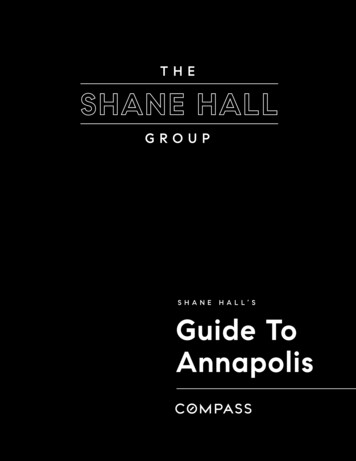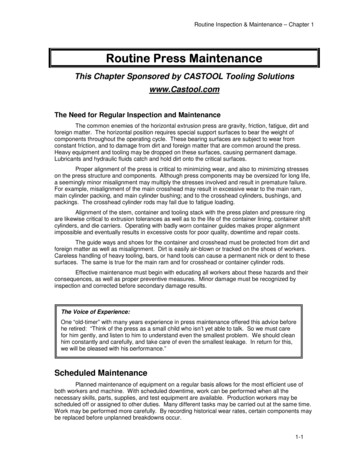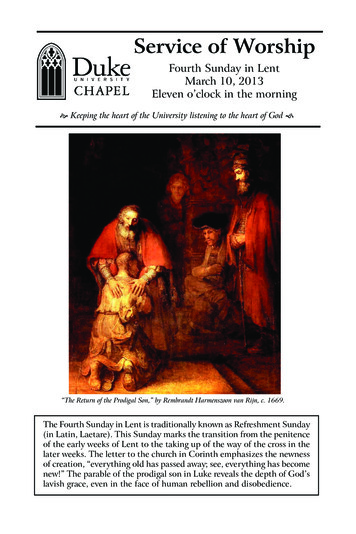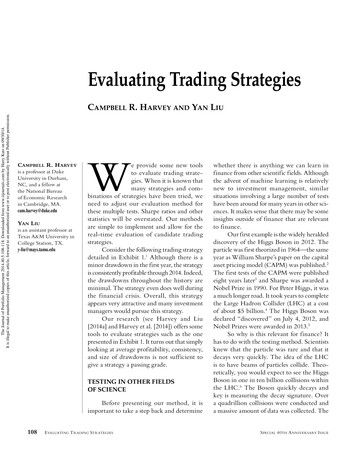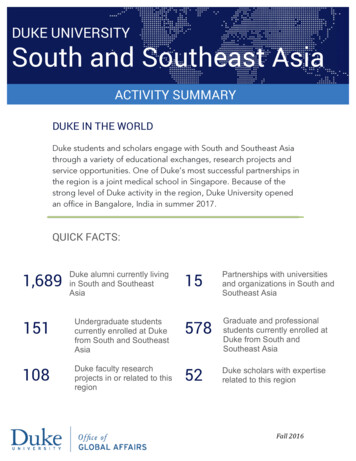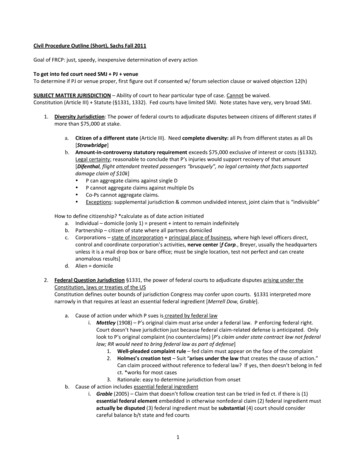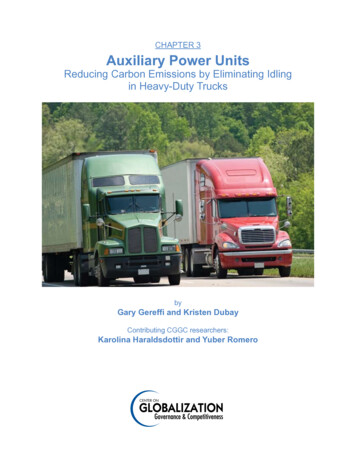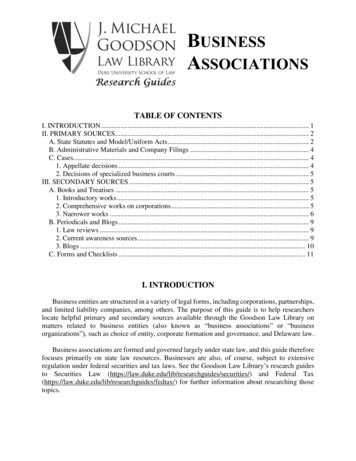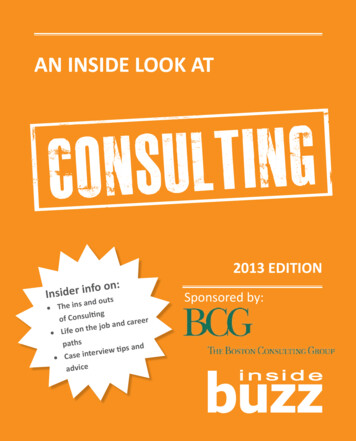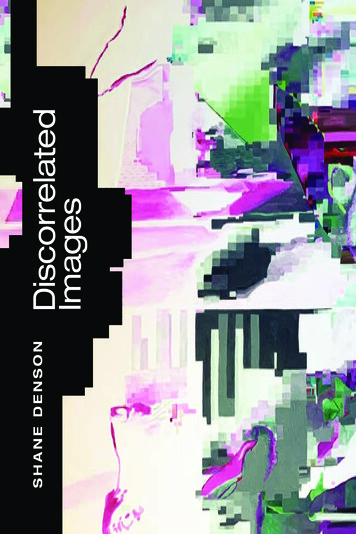
Transcription
SHANE DENSONDiscorrelatedImages
DiscorrelatedImages
DiscorrelatedImagesSHANE DENSONDuke University PressDurham and London2020
2020 Duke University PressAll rights reservedPrinted in the United States of Amer i ca on acid- free paper Designed by Drew SiskTypeset in Portrait Text by Westchester Publishing ServicesLibrary of Congress Cataloging- in- Publication DataNames: Denson, Shane, [date] author.Title: Discorrelated images / Shane Denson.Description: Durham : Duke University Press, 2020. Includes bibliographicalreferences and index.Identifiers: lccn 2019058965 (print)lccn 2019058966 (ebook)isbn 9781478009856 (hardcover)isbn 9781478010913 (paperback)isbn 9781478012412 (ebook)Subjects: lcsh: Digital images. Digital cinematography. Motion pictures—Production and direction—Technological innovations. Motion picture industry—Technological innovations. Motion picture audiences. Visual perception.Classification: lcc tr860.d46 2020 (print) lcc tr860 (ebook) ddc 777—dc23lc record available at https://lccn.loc.gov/2019058965lc ebook record available at https://lccn.loc.gov/2019058966Cover art: Karin Denson, Glitchesarelikewildanimals! No. 1, 2015. Acrylic on canvas.Courtesy of the artist.
For Amy:you have taught memore than anyone else abouthow to make senseof discorrelation
CONTENTSAcknowl edgments ixIntroduction Discorrelation and Post- cinema 1Part ITheorizing Discorrelation1 Crazy Cameras 212 Dividuated Images 513 Screen Time 73Part IIMaking Sense of Discorrelation4 Life to Those Pixels! 1135 The Horrors of Discorrelation 1536 Post- cinema a fter Extinction 193Notes 237Bibliography 277Index 293
A C K N O W L E D G M E N T SThis book has profited from the support and encouragement of countless people. My colleagues at the Leibniz Universität Hannover, at Duke University, and most recentlyat Stanford University listened to me talk about the ideaselaborated here and read vari ous bits and pieces of text thatwould eventually come together as Discorrelated Images. I amespecially grateful for the detailed feedback that I receivedon two occasions at the Faculty Salon of the Stanford Department of Art and Art History, and for the opportunity topre sent this work to colleagues and gradu ate students at theDigital Aesthetics Workshop at the Stanford HumanitiesCenter. Special thanks go to my colleagues for creating sucha supportive environment at Stanford, particularly ScottBukatman, Pavle Levi, Jean Ma, Karla Oeler, Usha Iyer, Alexander Nemerov, Jody Maxmin, Marci Kwon, Srdan Keca,Adam Tobin, Paul DeMarinis, Richard Meyer, Camille Utterback, Emanuele Lugli, Rose Salseda, Gail Wight, NancyTroy, Fabio Barry, Jonathan Calm, Terry Berlier, EnriqueChagoya, Jan Krawitz, Jamie Meltzer, Bissera Pentcheva,Richard Vinograd, Xiaoze Xie, Beth Kessler, Henry Lowood,and Fred Turner. Directly or indirectly, all of you helped mefind the strength to complete this proj ect. Thanks also toformer colleagues and mentors Mark B. N. Hansen, RuthMayer, and Peter Hutcheson, for whose continuing supportI am forever grateful, and whose example encourages me to
Acknowl edgmentsxpay it forward to the next generation of students. I am gratified to have hadthe opportunity to work with and learn from some amazing gradu ate students,including Hank Gerba, Ankita Deb, Ron Reichman, Amber Harper, Jeff Nagy,Doug Eacho, Annika Butler- Wall, Natalie Deam, Daniel Cohen, Helen Krüger,Juan Pablo Melo, Frank Mondelli, Michael Metzger, Daniel Hernandez, CoreyAnderson Dansereau, and Andrea Capra— you all inspire me; thank you.I have benefited from opportunities to pre sent this work at a variety ofconferences, including the Society for Cinema and Media Studies; the Societyfor Lit er a ture, Science, and the Arts; the American Comparative Lit er a tureAssociation; the Association for the Study of the Arts of the Pre sent; the Modern Language Association; the German Association for American Studies; theElectronic Lit er a ture Organ ization; the Spiral Film and Philosophy conference in Toronto; the Media Fields conference at uc Santa Barbara; and several nder the auspicesof the excellent conferences or ga nized by Richard Grusin uof the Center for 21st Century Studies at the University of Wisconsin– Milwaukee. Thank you to all the copanelists and audience members who engaged with this work and thus contributed to making the pre sent book better.Thank you also to the many p eople who have invited me to speak on topicsof post- cinema and discorrelated images at vari ous venues around the world:Lisa Åkervall, Chris Tedjasukmana, and Gertrud Koch for inviting me to speakat the Post- cinematic Perspectives event in Berlin; Reinhold Görling, Marie- Luise Angerer, and Hanjo Berressem for the invitation to speak in their Ecologies of Practice series in Cologne; Jo Ann Carson and Peter Hutcheson for theopportunity to speak at Texas State University; Natalie Roxburgh and MarcelHartwig at the University of Siegen; Bruce Isaacs at the University of Sydney;Russell Smith at the Australian National University; Caetlin Benson- Allottat Georgetown University; Ina Habermann and Michelle Witen at the University of Basel; Morgane Ghilardi and Hannah Schoch at the University ofZu rich; Kevin B. Lee at the Merz Akademie in Stuttgart; Ruth Mayer and theAmerican Studies Colloquium at the Leibniz Universität Hannover; KathleenLoock and Frank Kelleter at the Freie Universität Berlin; Steven Shaviro forhaving me Skype in at Wayne State University; Julia Leyda for figuring outa way for me to spend a week at the Norwegian University of Science andTechnology in Trondheim; Ahmet Gürata at the University of Agder in Kristiansand; Brian Price at the University of Toronto; Katerina Krtilova, DieterMersch, and the Media- Philosophical Working Group at the Zürcher Hochschule der Künste; Radhika Natarajan at the Sprache, Migration, Vielfalt series in Hannover; Zenaida Osorio at the Universidad Nacional de Colombiain Bogotá, where my family and I spent a nonstop, event- filled week; Giselle
Acknowl edgmentsGubernikoff and Edson Luiz de Oliveira at the Universidade de São Paulo; andFlorian Hoof and every body at the Institute for Advanced Study on MediaCultures of Computer Simulation and the Center for Digital Cultures at theLeuphana University of Lüneburg, where I completed this manuscript duringa generous research fellowship in the summer of 2019.I would also like to acknowledge my debt to the peer reviewers who offeredtheir incredibly helpful and insightful comments on this work: two anonymous readers and a certain “Reviewer #3,” who turned out to be the incomparable Vivian Sobchack. I am beyond grateful for the work that you all put intohelping me make this the best book it could be. Thank you also to the editorsand reviewers at Journal of Cinema and Media Studies, where an e arlier version ofthe first half of chapter 5 appeared (I am grateful for the permission to publishan expanded version of Shane Denson, “The Horror of Discorrelation: Mediating Unease in Post- cinematic Screens and Networks,” jcms: Journal of Cinemaand Media Studies 59, no. 4 [2020]). Thanks also to the editors and reviewersat Media Fields Journal, where earlier versions of ideas developed in chapter 4and chapter 6 first appeared (as, respectively: “Edge Detection,” Media Fields,no. 14 [2019], and “Post- cinema after Extinction,” Media Fields, no. 13 [2018]). An earlier, shorter version of chapter 1 first appeared as “Crazy Cameras, Discorrelated Images, and the Post- perceptual Mediation of Post- cinematic Affect,”in Post- cinema: Theorizing 21st- Century Film, ed. Shane Denson and Julia Leyda(Falmer, UK: reframe Books, 2016). Portions of chapter 6 also appeared as“Pre- sponsive Gestures,” in etc Media 110 (2017): 40–45. My thanks also toGrégory Chatonsky for permission to reproduce images of his incredible post- cinematic artworks.My especial thanks go to Elizabeth Ault, my editor at Duke UniversityPress, to editorial associate Kate Herman, and to project editor Lisl Hampton.It has been a true plea sure to work with you all, and I am extremely grateful forthe effort, enthusiasm, and attention that you and every one at the press havedevoted to this proj ect. Thanks also to Paula Durbin-Westby for her expertwork on the index.Fi nally, my deepest gratitude and love go to my family. Thank you, Karin,for supporting me like no one else could, certainly more than I deserve. Youhave several times picked up and moved around the globe with me, each timeturning our new environment into a home. Every single day, I find myselfagain in awe of your energy, creativity, and care. And Amy: this book is for you. You’ve taught me some of the central lessons that inspire this book, though Ican hardly hope to have communicated them in a way that w ill do justice tothe unspoken, possibly unspeakable truths you’ve revealed.xi
INTRODUCTIONDiscorrelationand Post- cinemaDiscorrelated Images explores the transitional space- time between cinema and post- cinema. More precisely, it probesthe transformational temporal and spatial articulations ofcon temporary moving images and our perceptual, actional,and affective interfaces with them as they migrate fromconventional forms of cinema and enter the computationalsystems that now encompass virtually e very aspect of audiovisual mediation. While the generation, composition,distribution, and playback of images increasingly become a matter of algorithms, software, networks, and codecs, oursensory ratios (as Marshall McLuhan called them) are beingreordered, our perceptual faculties are being reformed inaccordance with the new speeds and scales of imaging pro cesses. In a post- cinematic media regime, that is, both thesubjects and the objects of perception are radically trans umanformed. Older relations— such as that between a hsubject and a photographically fixed object— are dissolving,and new relations are being forged in the microtemporalintervals of algorithmic pro cessing. With the new objects ofcomputational images emerge new subjectivities, new affects,and uncertain potentials for perception and action.At the heart of these transformations lie the generativedynamics of high- speed (often “real- time”) feedback andfeed- forward pro cesses, which introduce (and modulate) newcontingencies at the heart of post- cinematic mediation. We
Introduction2glimpse such pro cesses in digital glitches, for example, which derail perceptionand inject the microtemporal misfirings of the computer into our subjectiveawareness. The under lying contingencies, however, are beyond the purviewof subjective perception; the algorithms and hardware operations responsiblefor the glitch are fundamentally “discorrelated” from phenomenological pro cesses of noetic intentionality. Moreover, the glitch reveals a more generalinstability attaching to computationally mediated images, which are highlyvolatile and always in danger of dissolution. Pro cessed on the fly in an intervalthat is inaccessible to human perception, the images that populate our worldare themselves discorrelated from human subjectivity—no longer tuned to thefrequencies of human sensory access and thus no longer essentially bound toappear at all.1 Nevertheless, vari ous forms and manifestations of con temporaryaudiovisual media mediate to us t hese pro cesses, providing sensory complements to subperceptual events, helping us in a sense to negotiate the transitionto a truly posthuman, post- perceptual media regime.2 These mediations andnegotiations are the focus of the pre sent book.Discorrelated Images engages, in other words, with the transactions between human and machinic agencies as they together broker the ongoing transitionfrom cinematic to post- cinematic media. Framed as such, the proj ect mustanswer to a number of objections at the outset. Isn’t the “death of cinema”a tired cliché? And isn’t the very notion of post- cinema therefore superfluous? The machinery of cinema has changed, to be sure, but the cinema thriveseven in a computerized world. Indeed, t here is no hard break, no bright linebetween cinema and post- cinema; the vision of post- cinema advocated hereis predicated not on cinema’s “end” but rather on its envelopment within thelarger space of an environment that has been thoroughly transformed by theoperation of computational pro cessing. There are real continuities betweenthe experience of going to the cinema in the age of celluloid and that of watching movies stored and screened by way of digital apparatuses; we still consumemoving images, and t hese moving images still mediate stories and other recognizably perceptual contents. But in focusing on these continuities, we riskoverlooking the volatility or contingency of this correlation of subject and object, which in the age of computational pro cessing teeters precariously atopmicrotemporal pro cesses that are radically dif fer ent in speed and scale from human perception. The perceptual correlation, in other words, pertains to alevel of phenomenal experience that is abstracted from, and systematicallyblind to, the under lying discorrelation.And yet, this book argues, the under lying discorrelation transforms ourexperience in impor tant and far- reaching ways. Some of t hese effects are more
Discorrelation and Post- cinemareadily apparent, like the sensation of being “blown away” by the ostentatious display of new visual effects, or simply taking (perhaps slightly annoyed)notice of formal changes introduced through nonlinear editing and digital color grading. Other experiential effects are far less obvious— for example,the subtle confusion between diegetic and extradiegetic spaces introducedthrough a digitally simulated lens flare, which at once simulates the physics ofan analog camera (that asks merely to be looked through in order that we mayperceive the simulated real ity beyond) while also embracing the goal of ostent
isbn 9781478012412 (ebook) . Corey Anderson Dansereau, and Andrea Capra—you all inspire me; thank you. I have benefited from opportunities to present this work at a variety of conferences, including the Society for Cinema and Media Studies; the Society for Literature, Science, and the Arts; the American Comparative Literature Association; the Association for the Study of the Arts of the .
